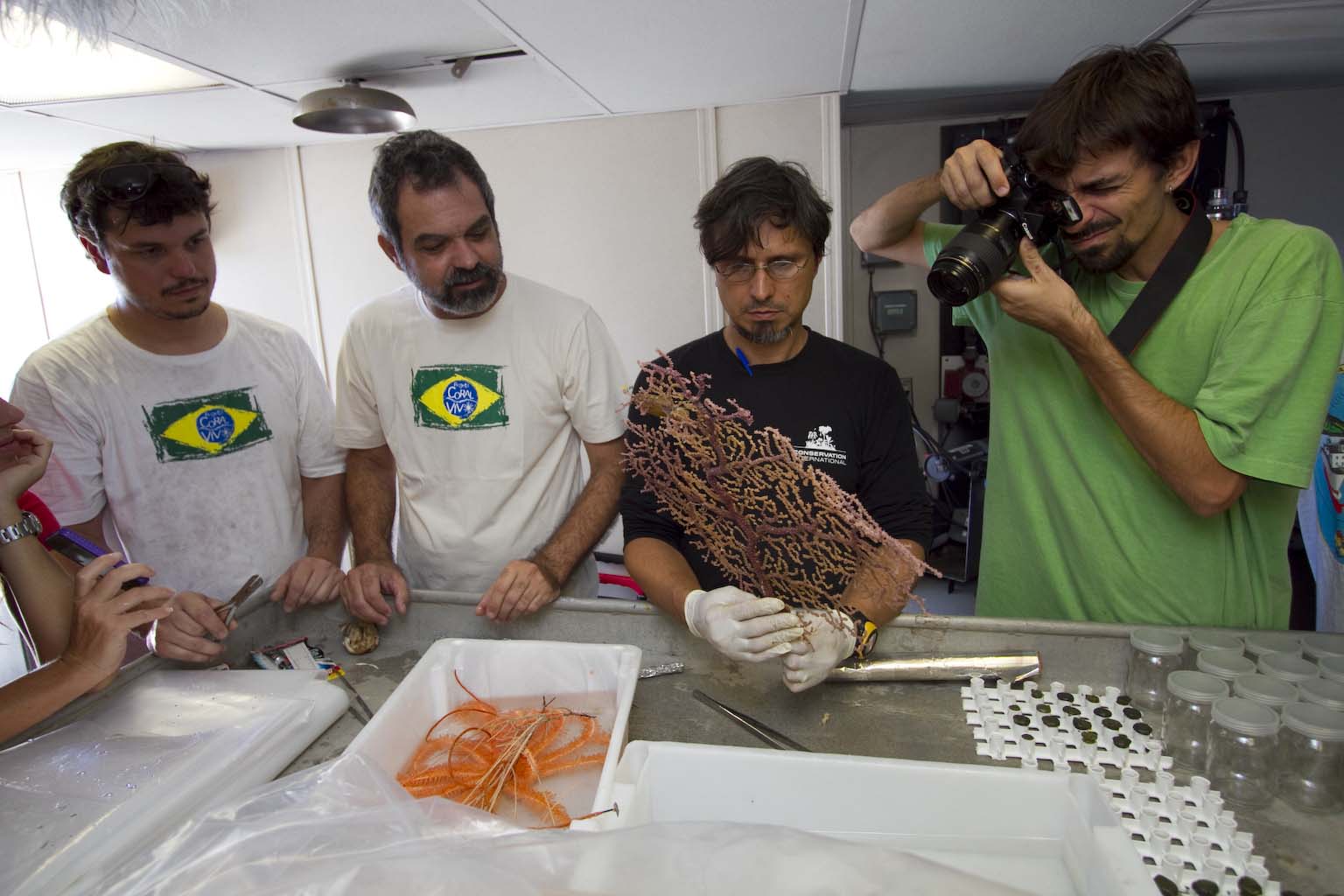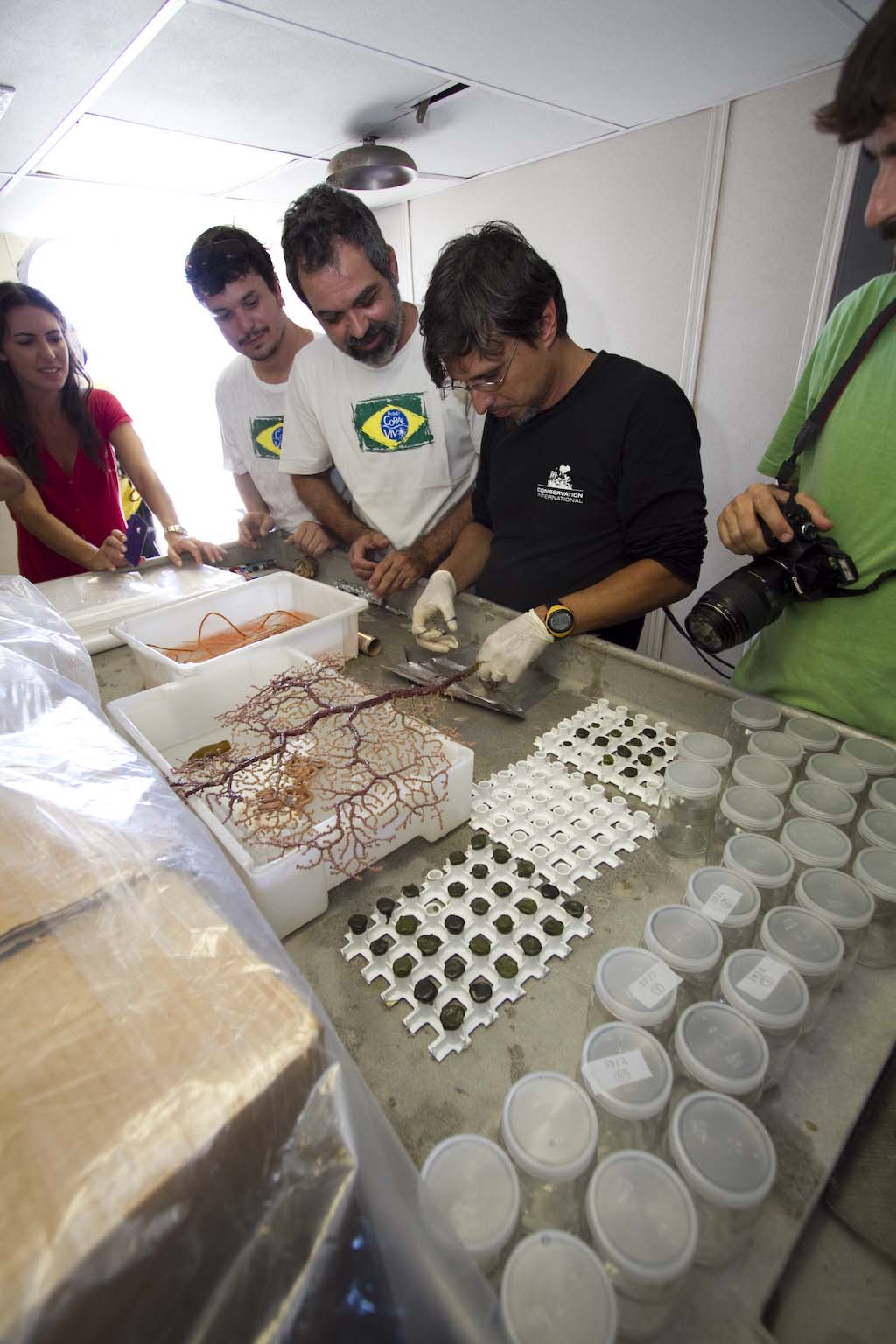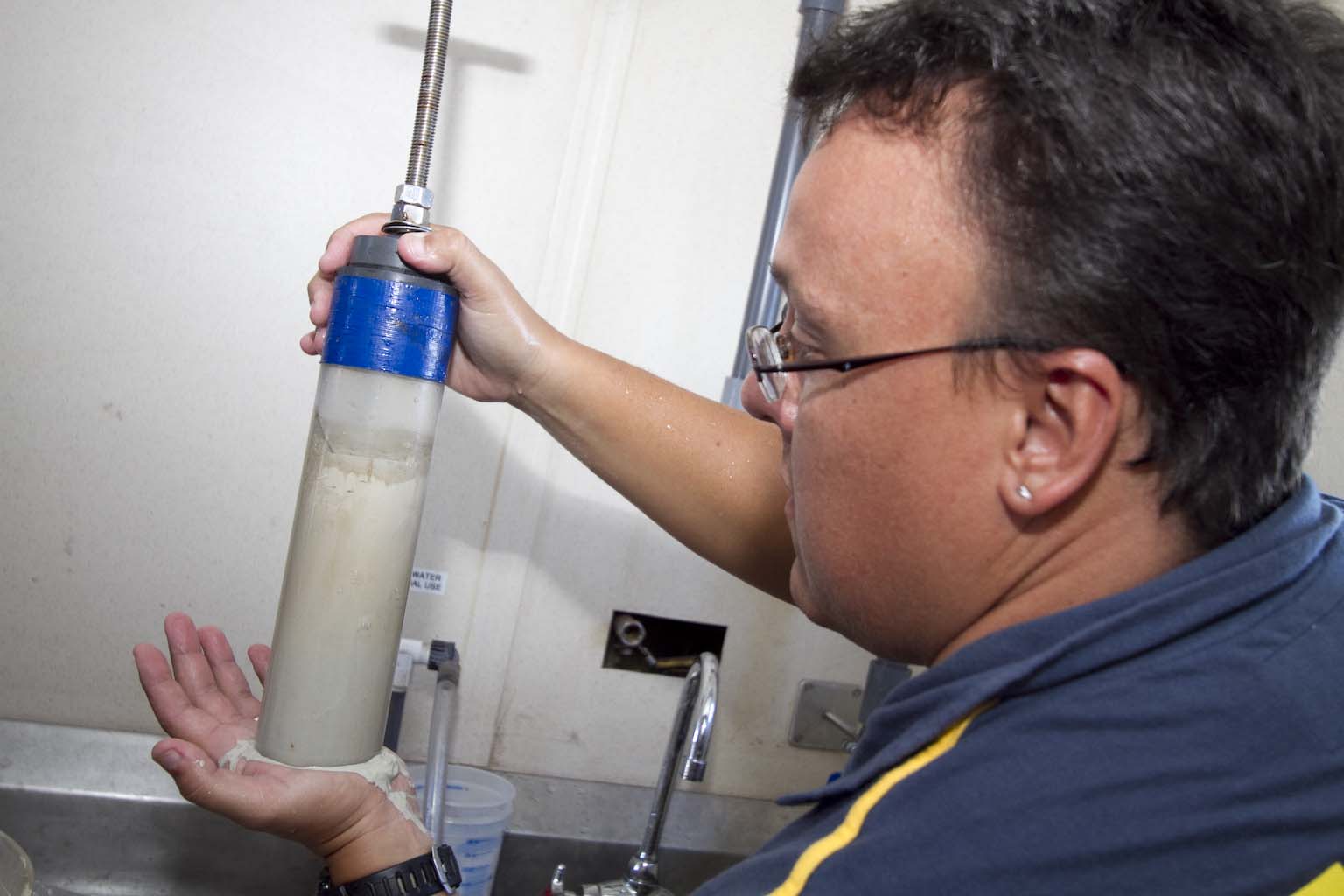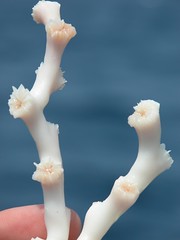There’s no doubt about it, coral reefs face a lot of threats. If you watch the news, read the paper or follow online, you might be familiar with many of these: overfishing, nutrient pollution, physical damage from tourists and of course the biggies - diseases, bleaching and ocean acidification. If you have no idea what I am talking about, read J.E.N. Veron’s piece in Yale Environment 360 for a good introduction, and a thorough demoralisation! The TL;DR of that article is that bleaching comes from heat stress that causes corals to expel their mutualistic algae, while all that atmospheric carbon dioxide we’re putting up in the air is leading to more acidic oceans that are ever more hostile to corals and other animals that want to deposit a calcium skeleton. Together, these threats may spell the end of coral reefs as we know them within a generation. That’s the idea anyway, but to the contrary, I want to make a case here that all is not lost and that efforts to restore reefs are not futile. I will present two pieces of work that suggest that recovery is possible and can be enhanced if we make a decent effort to help the reef do what it does best - recover - and I want to offer another thought that is very relevant to reef recovery, concerning heterogeneity.
 Black band disease in a massive coralLets start with Caribbean reefs. What a mess! All over the Caribbean, reefs have been subjected to widespread damage, especially overharvesting and nutrient pollution, stressors which in turn have been associated with extensive outbreaks of previously unknown diseases. Why does the Caribbean get it so bad? Well, there aren’t nearly as many coral species in the West Atlantic as there are in the Indo-West Pacific to start with, i.e. diversity is much lower and so is the percentage of space occupied by corals, or “coral cover”. So if the key coral species - staghorn Acropora cervicornis and elkhorn A. palmata in particular - are wiped out, then a lot of the reef forming ability is lost. With such low diversity, it isn’t far to fall, so to speak. And that’s exactly what happened. In some places it was the result of diseases that wiped out sea urchins that would normally graze down algae that would outcompete the corals. In other places it was overharvesting of herbivorous fishes. Take away the urchins/fish and the algae runs rampant and overgrows the corals and the reef dies. To make it worse, we insist on tipping the balance further in favour of algae by adding nutrients in the form of sewage effluent. A lot of diseases have also taken their toll on Caribbean corals. Many of these have descriptive names like “brown band”, “black band” and “white pox” that evince the nature of the lesion (say, a discoloured stripe, slowly spreading across the colony); these simplistic descriptions also highlight that their causes are often poorly understood.
Black band disease in a massive coralLets start with Caribbean reefs. What a mess! All over the Caribbean, reefs have been subjected to widespread damage, especially overharvesting and nutrient pollution, stressors which in turn have been associated with extensive outbreaks of previously unknown diseases. Why does the Caribbean get it so bad? Well, there aren’t nearly as many coral species in the West Atlantic as there are in the Indo-West Pacific to start with, i.e. diversity is much lower and so is the percentage of space occupied by corals, or “coral cover”. So if the key coral species - staghorn Acropora cervicornis and elkhorn A. palmata in particular - are wiped out, then a lot of the reef forming ability is lost. With such low diversity, it isn’t far to fall, so to speak. And that’s exactly what happened. In some places it was the result of diseases that wiped out sea urchins that would normally graze down algae that would outcompete the corals. In other places it was overharvesting of herbivorous fishes. Take away the urchins/fish and the algae runs rampant and overgrows the corals and the reef dies. To make it worse, we insist on tipping the balance further in favour of algae by adding nutrients in the form of sewage effluent. A lot of diseases have also taken their toll on Caribbean corals. Many of these have descriptive names like “brown band”, “black band” and “white pox” that evince the nature of the lesion (say, a discoloured stripe, slowly spreading across the colony); these simplistic descriptions also highlight that their causes are often poorly understood.
So, low diversity, excess nutrients, overharvesting, diseases, pretty hopeless right? Well, yes, you might think so. In many parts of the Caribbean, staghorn and elkhorn populations are down >95%. Let me stress that: coral populations are down by ninety-five percent or more. How grim is that? There’s no coming back from that, right? I mean, that’s too small a population to repopulate, right? Well, we’ll see in a minute.
 A bleached acroporid reefOK, now to the Pacific. Pacific reefs are like a Rolls Royce to the Caribbean Toyota (see how I did that? I offended millions of Toyota drivers and all the Caribbean reef fans at the same time - pretty nifty, huh?). Its undeniable though: on the whole, Pacific reefs have higher diversity, higher coral cover and are just flat out better reefs. Or rather, they were until the disastrous bleaching event of 1998/99 and those that have occured since. In addition, with so many more “stony” corals (the reef-forming or scleractinian types), Pacific reefs may be especially susceptible to ocean acidification. Various folks have tried to predict how the combination of heat/bleaching stress and acidification might affect Pacific reefs; I mentioned Veron’s article earlier, but you could also look at David Bellwoods paper from a couple of years back in Nature.
A bleached acroporid reefOK, now to the Pacific. Pacific reefs are like a Rolls Royce to the Caribbean Toyota (see how I did that? I offended millions of Toyota drivers and all the Caribbean reef fans at the same time - pretty nifty, huh?). Its undeniable though: on the whole, Pacific reefs have higher diversity, higher coral cover and are just flat out better reefs. Or rather, they were until the disastrous bleaching event of 1998/99 and those that have occured since. In addition, with so many more “stony” corals (the reef-forming or scleractinian types), Pacific reefs may be especially susceptible to ocean acidification. Various folks have tried to predict how the combination of heat/bleaching stress and acidification might affect Pacific reefs; I mentioned Veron’s article earlier, but you could also look at David Bellwoods paper from a couple of years back in Nature.
During the 1998/1999 El Nino event, vast tracts of Pacific reefs were bleached to death. Areas that had previously had 100% live coral cover now had none, and were soon covered in a veneer of turf algae. Much like the Caribbean situation, you have to wonder how a reef could possibly recover from that.
Yet - and this is where it gets good - recovery is possible. Perhaps we shouldn’t be surprised; reefs have had to recover from cyclones, climate changes, diseases and pests since time immemorial. But, can they recover from the man-made threats we’ve thrown at them lately? Two people at least say yes.
Ken Nedimyer is an unlikely hero for coral reefs. A former tropical fish and coral collector for the auqarium biz, he one day realised the threats to both his livelihood and his favourite places, and so he started and now runs runs the Coral Restoration Foundation, a non-profit reef restoration effort based in the Florida Keys. It seems like tilting at windmills, but no. Ken visited Georgia Aquarium recently and explained the foundation’s activities and, crazy as they might seem, it just might work. Ken and his team have a coral nursery off the coast of Key Largo, where they propagate corals to restore Florida reefs. How is this possible? Partly its the power of geometric increase. If Ken takes a colony of coral and breaks it into 25 pieces, each of those can grow a new colony that within a year or two can be broken into another 25 pieces, or 625 pieces total. Pretty soon you have enough “frags” or “nubs” to replant a decimated reef. Ken has done just that and the reefs have shown phenomenal growth since then. I asked him “What’s the point in replanting a reef if the original insult that killed the reef is still around?” I thought it was a fair question, but so was his answer, that its like a rainforest thats been clearfelled: the cutting crew is actually long gone but the thing preventing the forest from regrowing is that there aren’t enough seeds left to repopulate. But, if you plant some new colonies, you can recover the reef and do so suprisingly quickly. He showed photographic evidence of the reocvery of replanted reefs in just a few short years and by the end, he’d made a believer out of me. There IS potential for coral propagation as a meaningful way to rehab the reefs of Floirida and the Caribbean.
 CRF Coral nursery. Image copyright: Carey Wagner, South Florida Sun Sentinel
CRF Coral nursery. Image copyright: Carey Wagner, South Florida Sun Sentinel
What about the vast, vast Pacific though? How can we possibly restore those reefs? Enter our second reef scientist, Dr. Bruce Carlson. Bruce has been a leading figure in coral aquariculture for decades since his seminal works at the Waikiki Aquarium, but he’s also a passionate conservationist, diver and photographer, all of which combined to help him study natural resilience of Pacific reefs. After the 1998 bleaching event, Bruce had a chance to study the recovery of a number of reefs in Fiji, which he did in collaboration with his wife Marj Awai for the next decade, often on their own dime. Together they showed that the reef could crash from 100% live cover to just 3% and back to >95% in less than ten years. In the geological timescale (hell, even the biological), ten years is a fleeting instant. Thus they showed that reefs can and will recover from disastrous bleaching , naturally.
 Bruce Carlson on one of his transects in Fiji. Photo by Marj Awai
Bruce Carlson on one of his transects in Fiji. Photo by Marj Awai
The reefs of the world are incredibly special places and we should all be concerned about the threats that they face, but we can’t succumb to fatalism, because if we think that there is no hope, then we will take no action. To do so would be a terrible mistake because, as Ken Nedimyer and Bruce Carlson show us, passionate and committed people can make a big difference and reefs can heal naturally and do so even better with our help.
Heterogeneity plays an important part in both the decline of reefs and our efforts to rehabilitate them. In ecological parlance, heterogeneity means “patchiness” and it’s a pervasive feature of studies in biology. Heterogeneity is important in the problems that reefs suffer: it’s not all reefs everywhere that are degraded, it’s some reefs in some places. Similarly, our efforts to recover reefs will not occur everywhere reefs do; they will be highly focused in time and especially in space. Heterogeneity is thus a critical feature of both the problem and the solution. It means that we must always be mindful of where and when the problems occur, and that we must be equally strategic about applying solutions like Ken’s coral propagation programs. Given the severity of the problem and the limited resources available to meet the challenge, we have few other choices but we can be confident in the success of our efforts at preserveing or restoring reefs in at least some places, so that future generations can enjoy them as we have.
 Thursday, January 27, 2011 at 7:51PM
Thursday, January 27, 2011 at 7:51PM  A Dendrophyllia alternata (originally mislabeled here as Lophelia) colony collected from the Abrolhos platform
A Dendrophyllia alternata (originally mislabeled here as Lophelia) colony collected from the Abrolhos platform
















